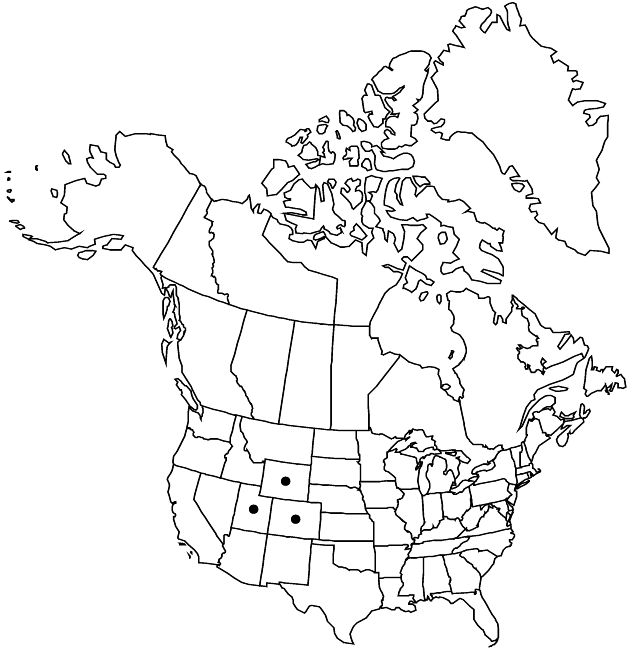Difference between revisions of "Heterotheca pumila"
Brittonia 39: 383. 1987.
FNA>Volume Importer |
imported>Volume Importer |
||
| Line 8: | Line 8: | ||
}} | }} | ||
|common_names=Alpine goldenaster | |common_names=Alpine goldenaster | ||
| + | |special_status={{Treatment/ID/Special_status | ||
| + | |code=E | ||
| + | |label=Endemic | ||
| + | }} | ||
|basionyms={{Treatment/ID/Basionym | |basionyms={{Treatment/ID/Basionym | ||
|name=Chrysopsis pumila | |name=Chrysopsis pumila | ||
| Line 64: | Line 68: | ||
|publication title=Brittonia | |publication title=Brittonia | ||
|publication year=1987 | |publication year=1987 | ||
| − | |special status= | + | |special status=Endemic |
| − | |source xml=https:// | + | |source xml=https://bibilujan@bitbucket.org/aafc-mbb/fna-data-curation.git/src/bb6b7e3a7de7d3b7888a1ad48c7fd8f5c722d8d6/coarse_grained_fna_xml/V19-20-21/V20_537.xml |
|tribe=Asteraceae tribe Astereae | |tribe=Asteraceae tribe Astereae | ||
|genus=Heterotheca | |genus=Heterotheca | ||
Revision as of 20:49, 27 May 2020
Perennials, (7–)12.5–30(–38) cm; taprooted. Stems 1–75+, decumbent to ascending or erect (sometimes reddish brown), moderately appressed-strigose, sparsely long-hirsute. Leaves: proximal cauline petiolate, blades narrowly oblanceolate, 25–56 × 4–9 mm, not stiff, bases attenuate, margins flat, entire, strigoso-ciliate, with a few, proximal, long-hispido-strigose cilia, faces ± densely strigose, sparsely stipitate-glandular; distal cauline sessile, linear-oblanceolate, little reduced to slightly longer distally, surpassing heads, margins entire, rarely slightly undulate, apices acute, faces moderately strigose, sparsely to moderately stipitate-glandular. Heads 1–9(–20), borne singly or in corymbiform arrays. Peduncles 2–10 mm, moderately strigoso-canescent, long-hispid hairs few, sparsely stipitate-glandular; bracts grading from leaves, reduced proximal to heads, those subtending heads usually 1–5, narrowly oblanceolate, (large) 6.5–15 × 0.9–2.5 mm, leaflike. Involucres cylindric to campanulate, (6.3–)7.6–12 mm. Phyllaries in 4–5 series, slightly reddish purple distally, lanceolate, unequal, margins scarious, faces moderately strigose, eglandular or sparsely stipitate-glandular. Ray florets 10–23; laminae (8–)10–15 × 1–2.5 mm. Disc florets (16–)24–60(–73); corollas barely ampliate, 4.6–7.1 mm, throats glabrous, lobes 0.5–1 mm, glabrate (hairs 0.1–0.25 mm). Cypselae monomorphic, obconic, compressed, 1.7–3 mm, ribs 7–11, faces sparsely to moderately strigose; pappi off-white, outer of linear scales 0.25–1 mm, inner of 35–45 bristles 4.7–7 mm, longest attenuate. 2n = 18, 36.
Phenology: Flowering Jul–Aug(–Sep).
Habitat: Granitic outcrops, roadsides, rocky soils, clay or shale soils, subalpine and alpine
Elevation: 2900–3800 m
Distribution

Colo., Utah, Wyo.
Discussion
Heterotheca pumila grows in subalpine and alpine sites in Colorado, southeastern Utah (Lasalle Mountains), and southern Wyoming, where it is very rare. It is most similar to H. villosa var. minor, which in the range of sympatry has larger heads but smaller distal cauline leaves than are typically found in H. pumila. Reports of occurrence of H. pumila from Arizona and New Mexico are based on narrow-leaved plants of H. fulcrata var. amplifolia with small ovate-lanceolate bracts subtending the heads.
Selected References
None.